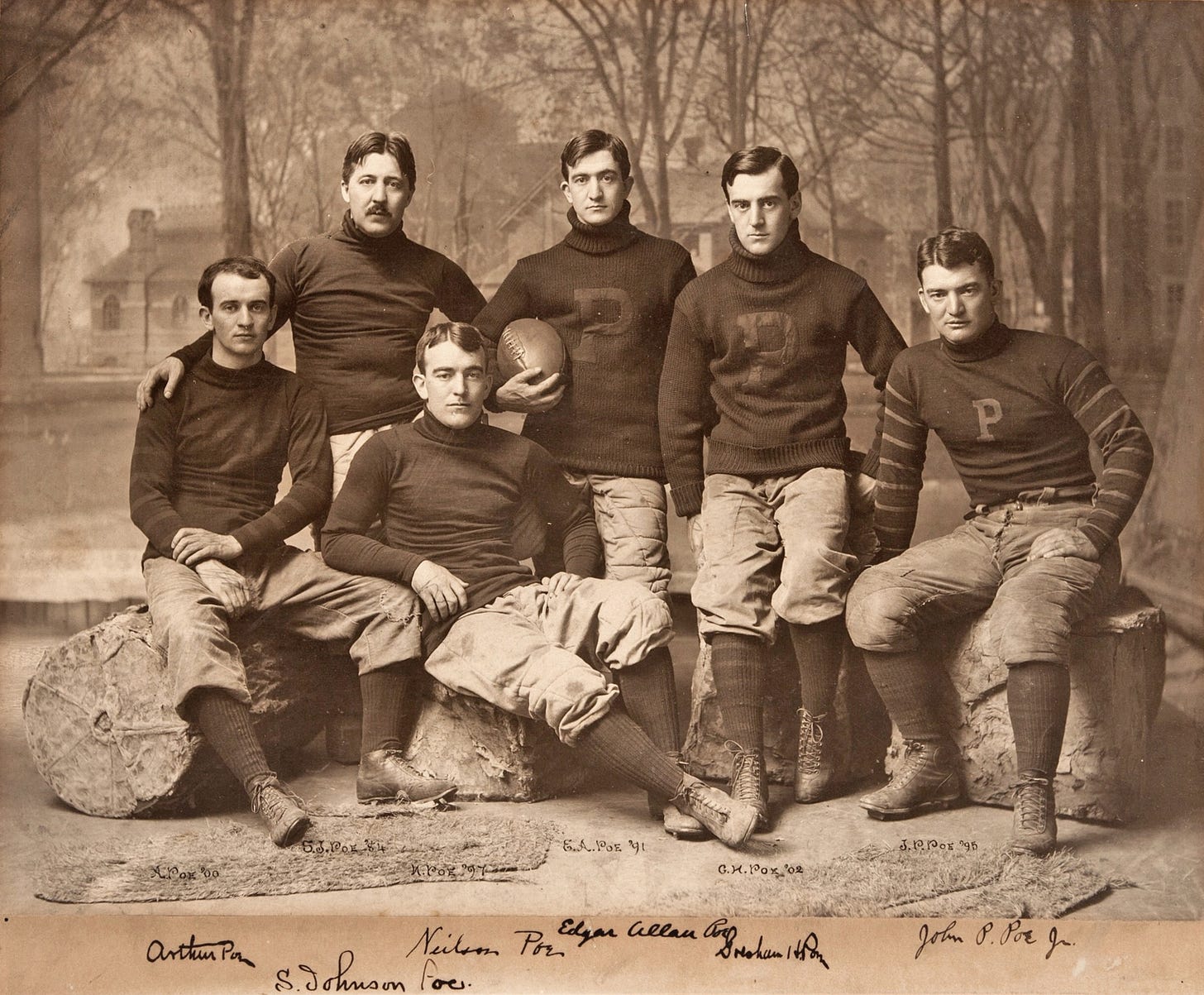Book Report: James R. Church's University Foot-Ball of 1893
I never liked book reports in grade school, and it wasn't because I did not like reading books or writing about them. Instead, it seemed the book report's purpose was to show that I read the entire book rather than discuss whatever I found interesting. So, while I plan to write occasional book reports here, I will focus on the interesting content, not prove that I read the entire book—which I did. Trust me.
James R. Church, a former Princeton player, published University Foot-Ball in 1893, making it among the earliest volumes covering the game. The book opens with Church reviewing football's development since the first games in 1876 (per Church), and he returns at the end to summarize football training methods and officiating. However, the book mostly consists of essays by premier players of the time that describe each football position, so it includes interesting points and reminders about how they played the game early on. (You can download the book for free from the Library of Congress. Here's a link to the PDF version.)
I wrote in the past about how the diagramming of football plays evolved, as did the term "X's and O's," and Church clearly struggled with the issue. His diagram below shows how the offense and defense lined up to start a play, followed by a second diagram representing the play in progress.
The diagram is confusing since it does not designate player movement. Still, like all other parts of the game, it was an attempt to diagram movements before we developed the conventions everyone understands today.
W. J. George, who played center for Princeton in the late 1880s, wrote the essay on the Centre-Rush. He noted the importance of the snapper-back or center withstanding the pre-snap pushes and shoves by opposing players. He also described how any “forward” or lineman might snap the ball during football’s early transition from rugby. The onset of structured plays led to the center handling the snap, except when the offense brought the ball back onto the field from out of bounds. Until 1885, the end generally walked the ball back onto the field and quickly snapped it. However, F. G. Peters, the 1885 Yale captain and center, insisted that he snap the ball every play. Other teams followed his example so the center became the universal snapper.

Similarly, Princeton's Edgar Allen Poe authored the essay on the Quarter-Back. He described how, until 1882, any back might take the ball from the snapper, just as any back can pick up the ball from a rugby scrum. However, as football teams began running structured plays, they developed signals (aka play names or numbers), with the captains calling plays at the line and the quarterback taking the snap. Having the captains call the plays was unwieldy, so they turned the play calling over to the quarterback, though captains sometimes overruled the quarterback's play call.

Poe also reinforced that before long snapping developed into the 1890s, the quarterback took the snap and lateraled the ball to the fullback, who then punted or dropkicked. This approach carried on for longer with teams that lacked effective long snappers.
As was typical of the time, several essays about other positions emphasized the physical and psychological makeup of stars at their positions, so they were less insightful than those covering football techniques and theories that arrived in the next twenty years.
So, that’s the first book report I’ve written in a few decades. I’ll periodically do reports on old-time football books and some current treatments of football’s history. Feel free to comment below and since many coaches and teachers read Football Archaeology, they can grade my book report if doing so makes them more comfortable.
Football Archaeology is reader-supported. Click here to buy one of my books or otherwise support the site.



I thought Edgar Allan Poe died in 1849....he must have gotten reincarnated...